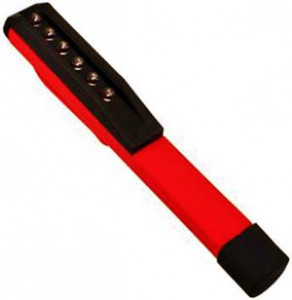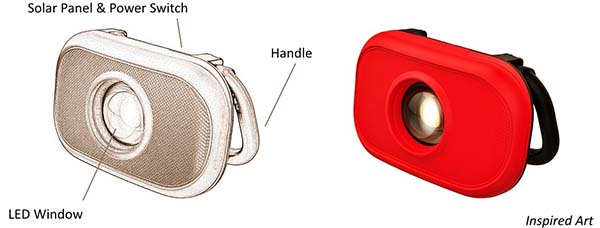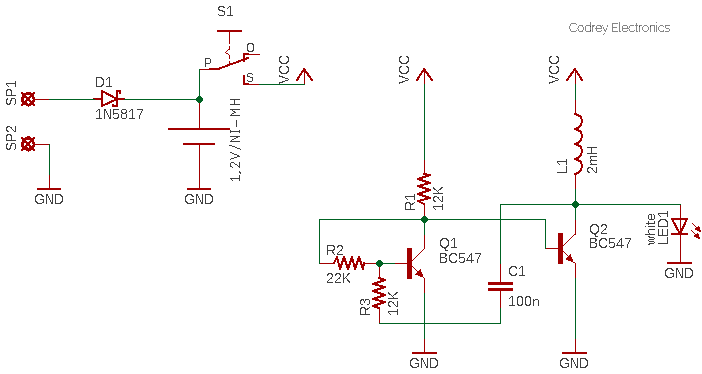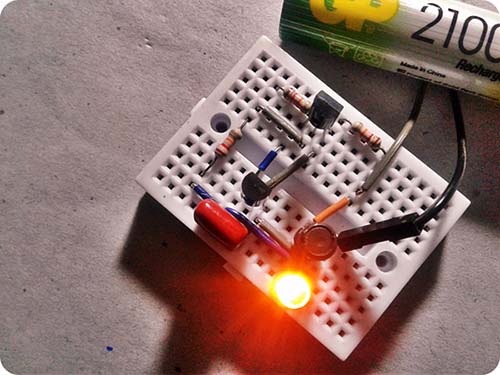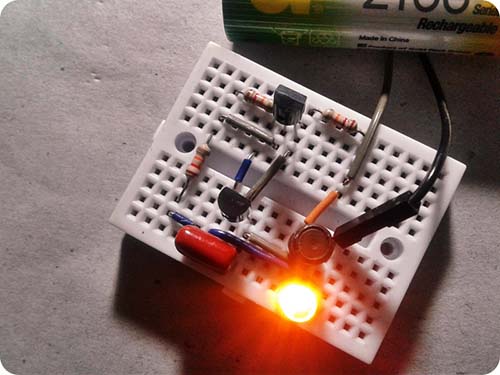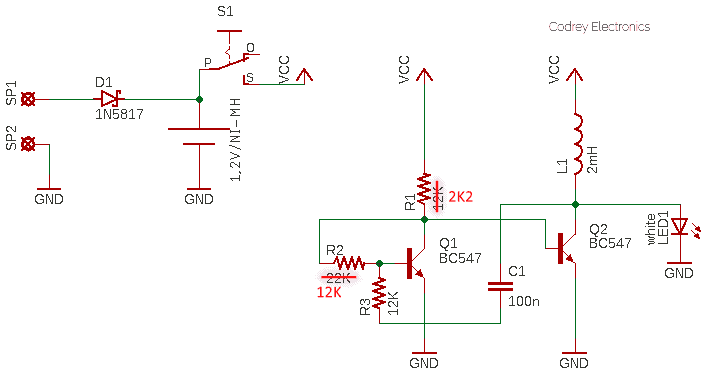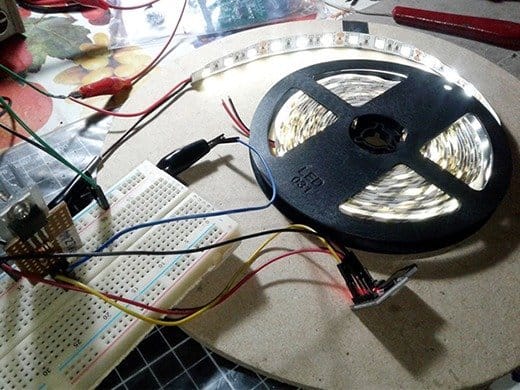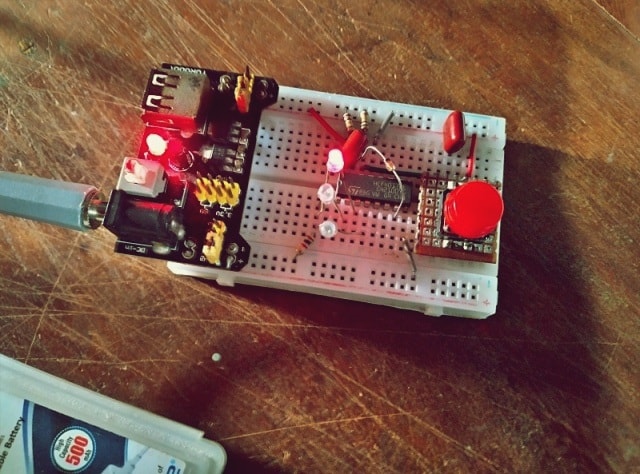You never know what kind of funny gizmos you’ll find online, especially when you’ve a bunch of notifications configured to go off when such wonders pop up. I even find myself searching for something despite not being sure what it is. That’s simply because I’ve committed to posting reviews and teardowns for the blogs I work on.
Two weeks ago, I came across this cheap Chinese lamp which is a pretty nice rechargeable LED penlight. If you’re wondering what the everyday application for such a minuscule device is, you’re not the only. But I’ll say, the idea seems absolutely fantastic. We can use it as a book light, flashlight, work light, emergency light, quick inspection lamp, etc.
During the Covid-19 pandemic days, I’ve been facing a few parts supply issues because most of my vendors abroad have been forced to shut down and slacken the shipping times. So, I decided to replicate the pocket light idea in my own way to make a little book light. I’ve used a bit old (and somewhat crappy) idea for developing that and it can be found here with helpful descriptions for you to build the project. Well, let’s get started!
Since I was interested to make a soapbox-like portable, lightweight, and rechargeable LED book light (for reading books in bed without disturbing others) I devised an artwork to prepare the enclosure similar to the one shown below. It turned out to my advantage – I can then attach a small solar panel on its backside to charge a Ni-MH cell glued inside. Luckily, I’ve a vast collection of salvaged small solar panels and rechargeable cells on hand.
And then, I tried the following circuit. I happened to find this idea in a 1980’s practical electronics textbook. I slightly modified the aged basic circuit and after a week of thorough testing brought out the first model.
A standard 5mm white LED needs 3 to 3.6V. How nice it would be to get by with 1.2V? The above schematic shows a crude square wave generator with a fixed power inductor at its core. The current through the inductor turns on and off rapidly and each time it’s switched off the induction voltage generated is added to the battery voltage. The level of the resultant output voltage actually depends on the output load but it adapts itself so that an LED with a high forward voltage (VF) rating will get more voltage than a low VF rated type.
Occasionally, something you’ve thrown into the loft can get a second life. So, search in and around your home lab to find a healthy 1.2V Ni-MH (~500mAh) rechargeable cell and a 2-2.5V (~60mA) mini solar panel. Nevertheless, the electronics can be built very small, in a stamp-sized perfboard, for example. See my mini breadboard version that has a 5mm warm white LED light source!
This is an oscillogram when my DSO was hooked on the collector lead of Q2 without LED1. As you can see, the oscillator frequency is around 24kHz!
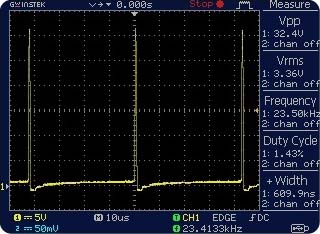
You can certainly build another non-rechargeable book light by omitting the ‘solar’ parts. Then use a common 1.5V AA or AAA dry cell in lieu of the 1.2V Ni-MH battery. The LED then becomes brighter but at the same time, the oscillator frequency decreases. With one healthy 1.5V dry cell, I got a Vpp value circa 63V. So be careful while soldering the LED because if the polarity is reversed the LED might be destroyed by the high reverse voltage arises there!
Still, feeling much too weak brightness? If so, here’s a change in the original circuit. Simply make a revision with smaller resistors as shown in the below schematic. The LED will become brighter (frequency decreases and duty cycle increases simultaneously) and you can see that the golden light (warm white) is much more lovely than before. Well, try this too.
As clearly stated before, this is a mere adaptation of the commonly encountered “LED Voltage Booster” design. This idea had several advantages. It’s relatively simple, and since the circuit runs from a single AA/AAA cell, the entire lightweight electronics could fit inside a matchbox-sized enclosure. Moreover, the circuit is moderately efficient, as it’s able to run the LED right down to a near-depleted battery terminal voltage of about 700mV.
Finally, even though this is not an utterly viable solution as in the case of the much-discussed and extensively replicated “Joule Thief LED” circuit, for those looking for a simple and intuitive do it yourself project demanding less learning curve, this could be the veracious answer!
Related Resources
- 5mm Warm White LED Datasheet https://www.marutsu.co.jp/contents/shop/marutsu/datasheet/504WC2E-W6-1PC.pdf
- BC547 Transistor Datasheet http://www.farnell.com/datasheets/59764.pdf
- 5V/60mA Solar Panel Data https://www.enfsolar.com/pv/panel-datasheet/crystalline/42903
- 2V Ni-MH Battery Datasheet https://www.mouser.in/datasheet/2/315/3492_fileversion-1627165.pdf
These are hyperlinks to information created and maintained by others. Be aware that neither the author (‘m) and/or publisher do not guarantee the accuracy, relevance, timeliness, or completeness of the information!

